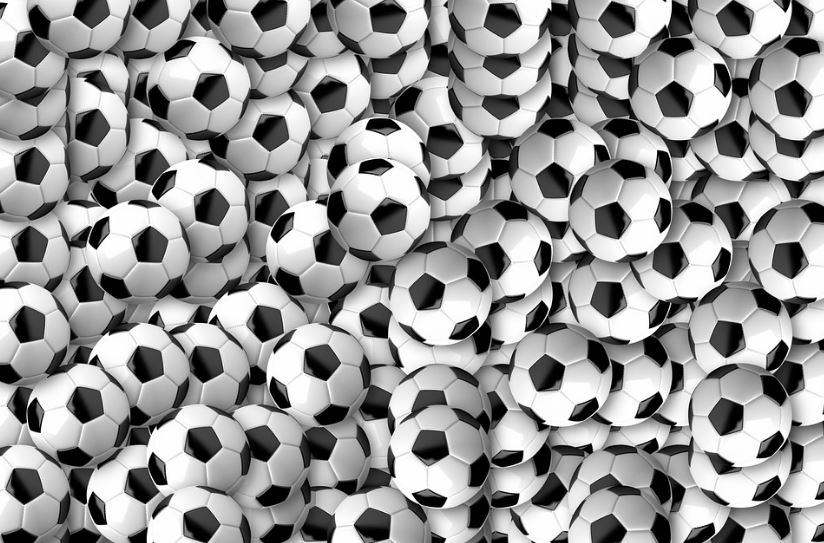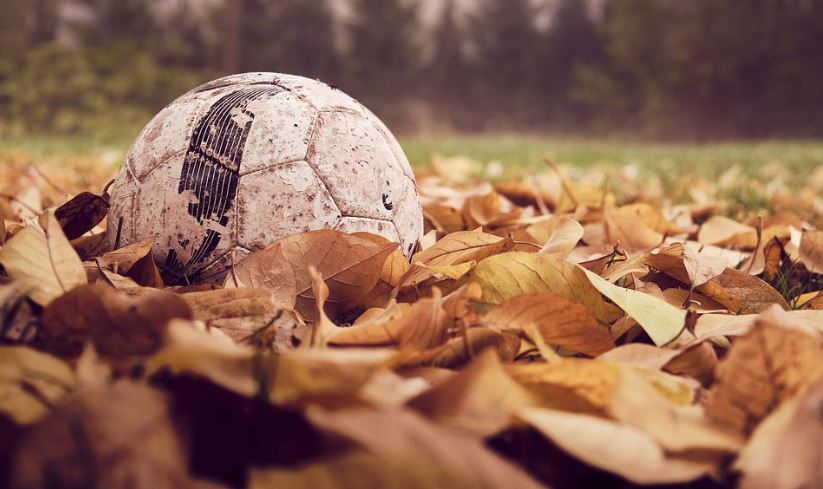History of the Soccer Ball

Soccer ball? It doesn’t need an introduction. You can easily identify it out of numerous types of balls because of its distinctive appearance, size and color scheme. The soccer ball we see in the recent times is completely different from what the past players used. Its history is long yet interesting.
Soccer is being loved and played all over the world for over thousands of years from now. With the passage of time, the game has evolved for good and so did the soccer ball. Let’s travel back to the old times to learn about the ENGROSSING history of the soccer ball.
Before moving a head, it is important to read about different forms of ball games played in the ancient times, and the objects they used instead of a ball.
Different Forms of Balls in The Ancient Times
The first soccer ball in the history was invented by the ancient civilizations over 3,000 years ago. However, that version was entirely different from the modern soccer ball.
Below, we will discuss some of the oldest forms of soccer and the evolution of ball overtime.
1. Chinese Tsu Chu
From 255 BC to 220 AD, during Han and Ts’in Dynasties; Tsu Chu was played by the Chinese in which they utilized balls that were made of stuffed animal's skins in a spherical form. The motive of the game was to dribble the animal-skin balls in a net which was tied up between two poles.
2. Aztec and Maya Indians
Aztec and the Maya are South American civilizations. It is reported that they used elasticized ball for playing soccer in ancient times, which was made of natural latex present in the rubber wood.
3. The Ancient Egyptians
The ball used by the ancient Egyptian to play their version of soccer was basically a bunch of seeds covered in linen. To make it bounce better, they also made soccer balls with animal skin or catgut.
4. Romans and Greeks
The ancient Roman and Greek civilizations also contributed an important part towards the making of first soccer ball in the history. Instead of seeds, they used hair to form a ball wrapped with linen. Their version of game generally comprised of carrying and kicking the ball.
5. Pig Bladder Soccer Ball
By the medieval times, football or soccer became quite popular among people. The player utilized inflated pig bladders in the replacement of a ball. However, due to the lack of shape retention, it was harder to play with it. Moreover, inflated bladders would rupture easily. Therefore, leather covers were introduced to give them a defined shape and ensure longevity.
The Foundation of Modern Soccer Ball
Soccer was already a known sport throughout the world by the 1800s. Hence, the need of making reliable balls was more than ever during that time. In 1844, patented vulcanized rubber was invented by Charles Goodyear, and it helped a lot in the making of the first ever soccer ball in sport’s history.
- 1855 was an important year for the evolution of soccer ball.
- Charles Goodyear was the first person to invent a soccer ball, which was round and made of vulcanized rubber.
- Before this, pig bladder were used and they were not totally round. Their shapes and sizes may vary, depending on the type of bladder.
Why Normal Rubber Was Not Used Instead of The Vulcanized One?
There were a lot of reason behind it, and the biggest one was the durability and questionable formation of the normal rubber.
Go through the comparison chart below to find out why vulcanized rubber was a better choice.
Type of rubber | Texture | Corrosion Resistance | Tensile Strength | Elasticity | Temperature Resistance | Durability |
Normal Rubber | Soft and sticky | Less abrasion resistance | Low tensile strength | Stretching can cause deformation permanently. | It can withstand limited temperature range, from 10° to 60° C | May not last longer |
Vulcanized Rubber | Hard and less sticky | High abrasion resistance | High tensile strength | Highly elastic | High temperature doesn’t affect it, ranging from 10 to 100° C | Highly durable |
Vulcanized rubber was certainly the better option as compare to rubber because it wouldn’t deform in high temperature and ensure durability while maintaining the bouncing feature.
Why Vulcanized Rubber Balls Replaced The Inflated Bladders?
An English leatherworker named Richard Lindon found the need to replace pig bladders with an alternative because of the health hazards people get while blowing it. His wife was also a victim and died of lung disease that could be caused by blowing infected pig bladders.
Finally, in 1862, Lindon found a substitute in the name of Indian rubber, also known as caoutchouc. However, the material was hard enough to inflate with mouth. In this scenario, Lindon made a large brass version (inspired by a medical syringe) to fill up the football, and that’s how the initial form of soccer ball was born.
Although these rubber balls were not durable, but still they were part of a huge number of soccer matches before the 20th century.
The First Official Shape and Size of Soccer Ball

As stated above, the shape and size of a soccer ball were completely dependent on the dimensions of a pig bladder and there was no standard ruling for it. All thanks to Charles Goodyear for the invention of vulcanized rubber which made it possible to set official dimensions of a soccer ball.
In 1863, the FA - English Football Association formed the first set of rules of the game. However, no point was related to the description of the soccer ball. Later in 1872, the Football Association revised the official game rulings and declared that the ball must be between 68.6 to 71.1 cm (27-28 inches), and its shape should be spherical. Moreover, the stated weight of the ball was 16 oz. to 14 oz. at the beginning of the match. This standard description of soccer ball was pretty much similar to the Goodyear’s soccer ball. Therefore, he is known as the inventor of modern-day soccer ball.
Developmental Stages of Soccer Ball in Late 1800s
- As the English Football League established, the production of leather balls was also initiated in 1888.
- Although rubber ball was already introduced in the 1855, but players would still prefer leather balls in the late 1800s.
- The two famous names behind the mass production of soccer balls were Mitre and Thomlinson’s of Glasgow. These brands figured out the most significant elements of a quality soccer ball, and tried making the best version of it that could retain the shape.
- The most skilled sewers and cutters were used with the strongest leather to produce optimum results.
- Interlocking panel were introduced instead of formally joined leather sections. It not only enhanced the ball design, but the shape turned out more rounder.
The Soccer Ball of the 1900s
The prominent features of a soccer ball of the 1900s are as follows:
- It was made of strong rubber and had the ability to withstand heavy pressure.
- The inner tubes of these balls were covered with heavy leather to make them bounce better and easier to kick.
- A cover fabricated with tanned leather was used in a majority of soccer balls, having eighteen sections.
- Five-ply hemp was used for stitching cover by hand and once completed, it was turned over in a way that stitching remains inside.
- The outer side of cover had a 15 cm slit to introduce the uninflated bladder.
- A tube was inserted inside the cover through the opening once the ball was blown, and then the slit was closed firmly.
Regardless, these balls were not able to hold air for too long, and they needed to be re-inflated during the matches.
Soccer Ball in The First World Cup
In 1930, during the FIFA World Cup, a laced soccer ball was used. From 13th to 30th July, the game was held in Uruguay. By that time, the standardization was not done, and the controversy between Uruguay and Argentina happened when they couldn’t agree upon a single choice of ball. However, both the team settled on playing half of the game with Argentinian ball and the other half with Uruguayan ball.
As a result, Argentina was winning the game by 2 - 1 in the first half, while Uruguay turned the tables in the other half and won the final by 2 - 4. The results showed the importance of soccer balls in the game.
Invention of Water-proof Soccer Balls
The problem with leather soccer balls was that; they used to become heavy during rain conditions due to the absorption of high water content. As a result, countless head injuries were reported.
To resolve the issue, non-payment materials and synthetic paints were utilized to cover the leather covering. It lowered the water absorption to some extent. Secondly, the laced slit was removed and new valve was invented to help the ball surface become more smooth, regular and easy to control.
The Era of Colored Soccer Balls

To enhance ball visibility for players and spectators; floodlights were introduced and only white colored balls were allowed. In fact, since 1892, only white balls were seen on the ground; leather covers were whitewashed to obtain the color. Besides, orange soccer balls could be seen in the 1950s as they were said to facilitate visibility in the snowy weather.
Synthetic Soccer Balls
In the 1960s, the first ever synthetic soccer ball was launched. It was believed that leather balls were better in bouncing and had consistent flight. Therefore, it took time for the people to completely replace it with synthetic balls, and finally in the 1980s; it happened. Undoubtedly, synthetic materials soccer balls maintained the qualities of leather, but lowered the level of water absorption.
Buckminster Type Soccer Ball
An architect from America, Richard Buckminster, came up with an innovative design of soccer ball, which was named after him Buckminster Ball also popular as Buckyball. It featured a series of hexagons, triangles and pentagons patches that were stitched together, creating a round shape.
Before the introduction of thermal bonding; the Buckminster ball with 12 pentagonal and 20 hexagonal surfaces was considered as the ‘nearly perfect’ sphere shaped soccer ball. This black and white ball became a hit in world of sports.
Some Popular Soccer Balls of The Recent Time
Have a look at some of the famous soccer balls that have helped a lot in the evolution of soccer ball.
Black & White Soccer Ball – 1970
This well-known soccer icon was specially designed by Adidas for the World Cup of 1970. The match took place in Mexico, and Brazil won it. The ball had a strong resemblance with Telstar space satellite, so it was named after it.
- The black and white combination of this soccer ball helped in making it more prominent on the black and white TV screens.
- It was made of 32 panels in total with 12 black and 20 white ones.
- Two updated Adidas Telstar’s versions were used in the World Cup of 1974: Telstar Durlast with black and white combination and the other one was an all-white Adidas Chile.
For the first time in the history, FIFA declared its official soccer ball during the tournament.
Adidas Teamgeist Soccer Ball – 2006
Adidas again showed up for the 2006 FIFA World Cup with more innovations in the design. The tournament took place in Germany, and it was won by Italy.
- Commonly 32-panel balls were seen during the tournament, but the new Teamgeist soccer ball by Adidas featured only 14 panels.
- In German, Teamgeist means ‘team spirit’. Instead of stitching, the panels of the balls were bounded together.
- The absence of stitches and less panels resulted in a rounder and smoother ball with increased playability and better control.
Adidas Jabulani Soccer Ball – 2010
For the 2010 World Cup, Adidas launched the 8-panel soccer ball. This time South Africa hosted these matches, and the tournament was won by Spain.
- These balls were equipped with improved polyurethane materials and featured 8 panels.
- It was titled as Jabulani, which was taken from Zulu - one of the official languages of South Africa, meaning celebrate.
Adidas Brazuca Soccer Ball – 2014
The FIFA World Cup of 2014 was held in Brazil, and Adidas introduced another great design for the tournament known as Brazuca (slang word used in Portuguese for Brazilian).
- The panels of these balls were even fewer than the past football versions with only six polyurethane that were bonded thermally.
- Due to less number of panels; the consistency of balls was increased, and it also helped with the aerodynamic problems that were reported in the Jabulani ball.
Conclusion
The shape and sizes of soccer balls evolved overtime. Certain objects were utilized in the ball games instead of football during ancient time. Charles Goodyear was the first person to lay the foundation of the modern times soccer ball in the 1855. Since then, a lot of improvements were made to get the final results that you see today.
However, this is not the end! The quest for a better and improved soccer ball is never-ending. You never know what coming years have to offer you in the world of soccer. Fingers crossed.




